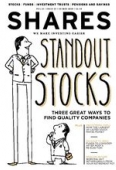Archived article
Please note that tax, investment, pension and ISA rules can change and the information and any views contained in this article may now be inaccurate.
Using low-cost ETFs to gain exposure to sectors

There is an ever-growing list of exchange-traded funds (ETFs) providing investors with low-cost access to specific industry sectors. While the costs may be slightly higher than broad market-based ETFs such as those tracking the FTSE 100, these sector products can be cheaper than actively-managed funds pursuing exposure to the same industries.
Investors need to decide whether they want to pay more for an actively-managed fund in the hope that the fund manager can outperform the market or pay less to simply track a relevant index.
Anyone choosing the passive route, i.e. buying an ETF, should make sure they understand the underlying index being tracked before making an investment.
Picking an ETF simply because it tracks a specific sector such as healthcare is only the first stage of your research process. You should also understand how it is going to get exposure and which companies would, or would not, qualify for inclusion in the underlying index being tracked.
You should be able to find this information by looking at the product description for each ETF and identifying the relevant index. The next step is to visit the ETF issuer’s website where they should provide more information, or you could look at the index provider’s website for further details.
HOW TO BROWSE THE RANGE OF SECTOR ETFs
Financial data specialist Morningstar offers a free tool on its website where you can search for London-listed ETFs across 16 sectors. Some of these sectors only contain a few products, others provide far greater choice. For example, 24 ETFs appear
on its list for the financial services sector.
Some of these products will track the same index and you may see several different versions of the same product where you can choose the currency in which it is priced such as US dollars or British pounds.
You will also be able to see the ongoing charges that come with the products, data on past performance and Morningstar will also display its star rating on certain products.
It is worth noting that other sector ETFs will be available on the market as Morningstar’s search system doesn’t cover the full range. Simply check that any products you wish to buy are listed on the London Stock Exchange as it can be difficult to buy ETFs listed on overseas exchanges.
You may find the odd European-listed ETF available via a UK investment platform but in general overseas-listed products are off limits to retail investors in the UK.
Let’s now take a look at some of the sector choices and products available via the London market.
FINANCIAL SERVICES SECTOR
There is quite a wide selection of London-listed ETFs tracking the financial services sector including products tracking the performance of banks in Europe and the US.
Amundi ETF MSCI Europe Banks (CB5) tracks an index of large and mid-cap banks across 15 developed market countries in Europe. Top holdings within the index include HSBC (HSBA), Banco Santander, BNP Paribas and Lloyds (LLOY).
You can also get exposure to a broader selection of financial companies around the world via SPDR MSCI World Financials (WFIN). Half of the underlying index tracks US-listed companies including JPMorgan Chase and Bank of America. You also get exposure to financial stocks in the UK, mainland Europe and Canada. Over the past three years the ETF has achieved 15.2% annualised returns, according to Morningstar.
CONSUMER GOODS AND SERVICES
This broad industry tends to be split into two categories: consumer staples which refers to companies that produce items such as food, drink and non-durable household and personal products; and consumer discretionary which refers to ‘nice to have’ goods and services such as entertainment and leisure, but not essential to one’s life.
On the former category, relevant ETFs include iShares S&P 500 Consumer Staples Sector ETF (IUCS) which provides diverse exposure to US-listed companies, many of which do business around the world.
It is tracking an index that includes well-known names in the consumer staples category such as Procter & Gamble, Coca-Cola, Walmart and Colgate-Palmolive. All of these companies provide products many people use every day in their home such as toothpaste, nappies and washing powder, as well as food and drink.
A good example of the consumer discretionary category is Invesco Consumer Discretionary S&P US Select Sector ETF (XLYS) which has done very well in recent times with 20.2% annualised returns over the past five years.
It tracks the performance of consumer discretionary stocks on the US S&P 500 index – essentially companies providing goods and services that are part of everyday life such as popular places to buy everyday goods, the manufacturer of your favourite car, or coffee shops selling your daily caffeine hit. However, should times get hard, one could easily see individuals cut back spending in these areas.
Names in the index being tracked by Invesco’s ETF include Amazon, McDonald’s, Nike, Starbucks and Ford Motor.
Important information:
These articles are provided by Shares magazine which is published by AJ Bell Media, a part of AJ Bell. Shares is not written by AJ Bell.
Shares is provided for your general information and use and is not a personal recommendation to invest. It is not intended to be relied upon by you in making or not making any investment decisions. The investments referred to in these articles will not be suitable for all investors. If in doubt please seek appropriate independent financial advice.
Investors acting on the information in these articles do so at their own risk and AJ Bell Media and its staff do not accept liability for losses suffered by investors as a result of their investment decisions.

 magazine
magazine











